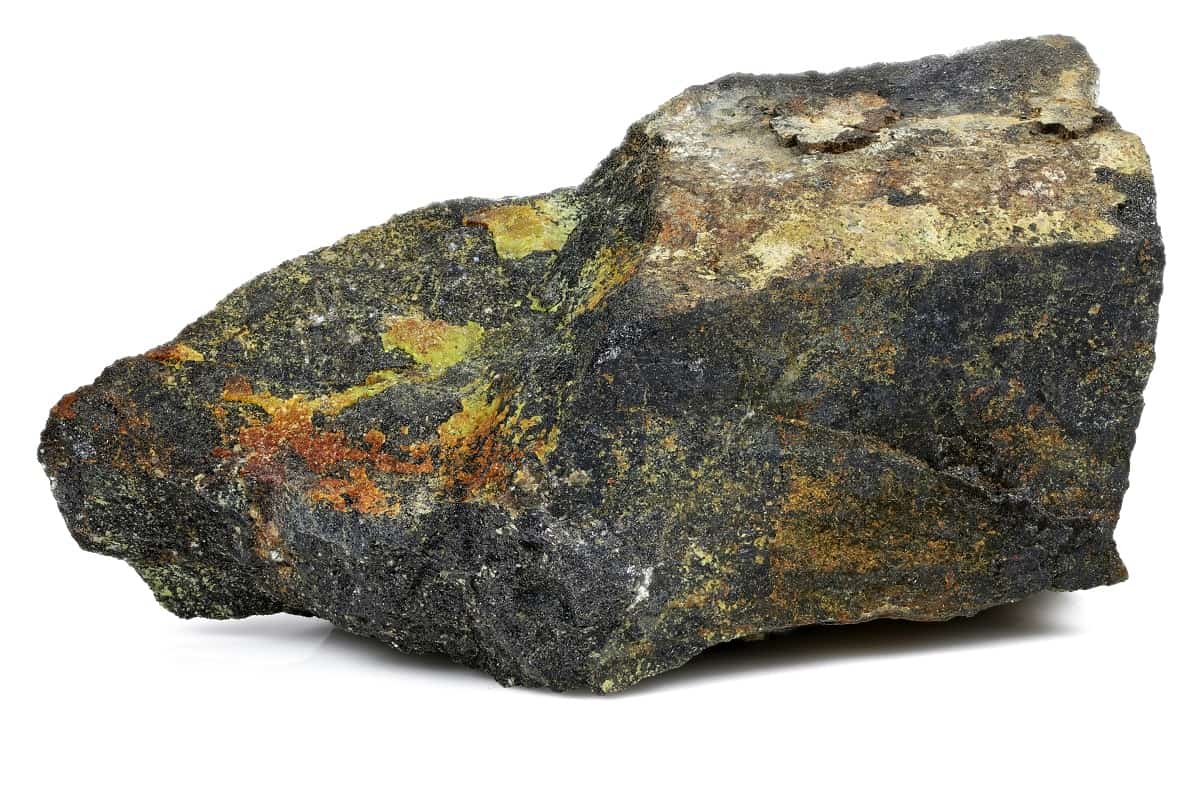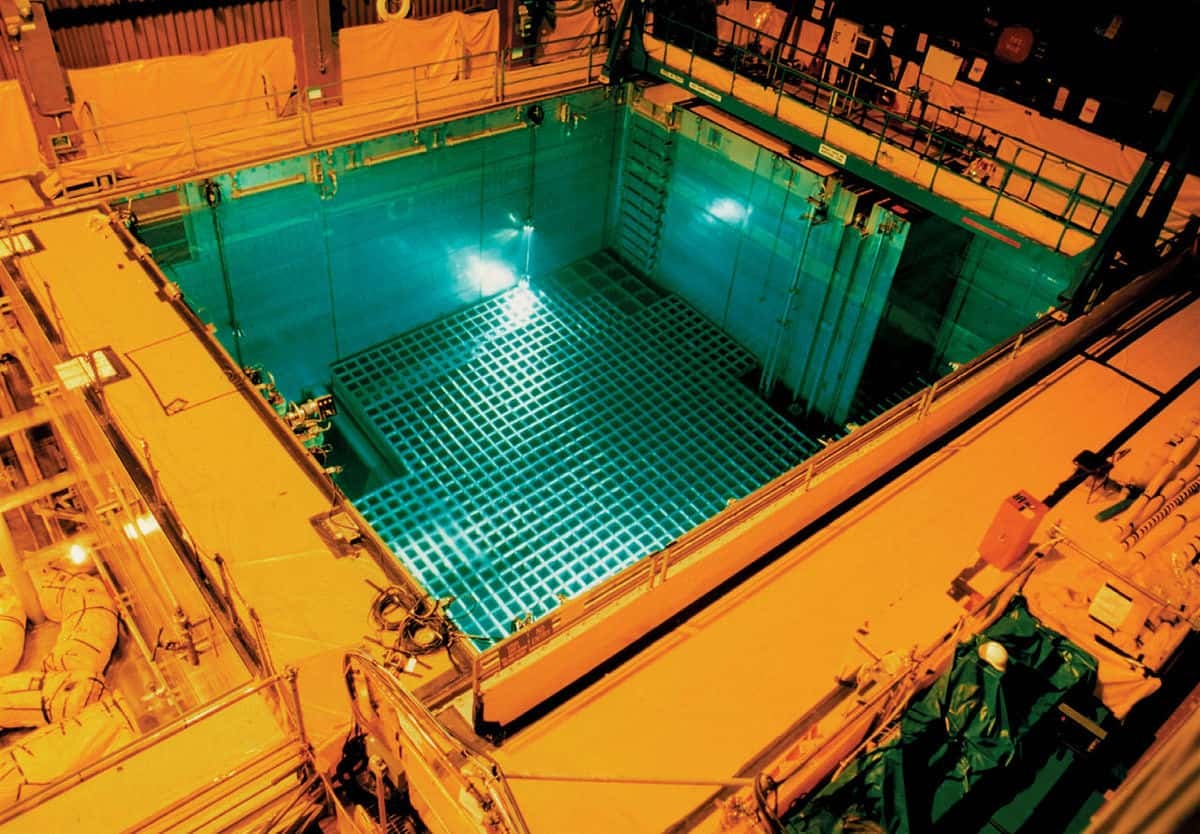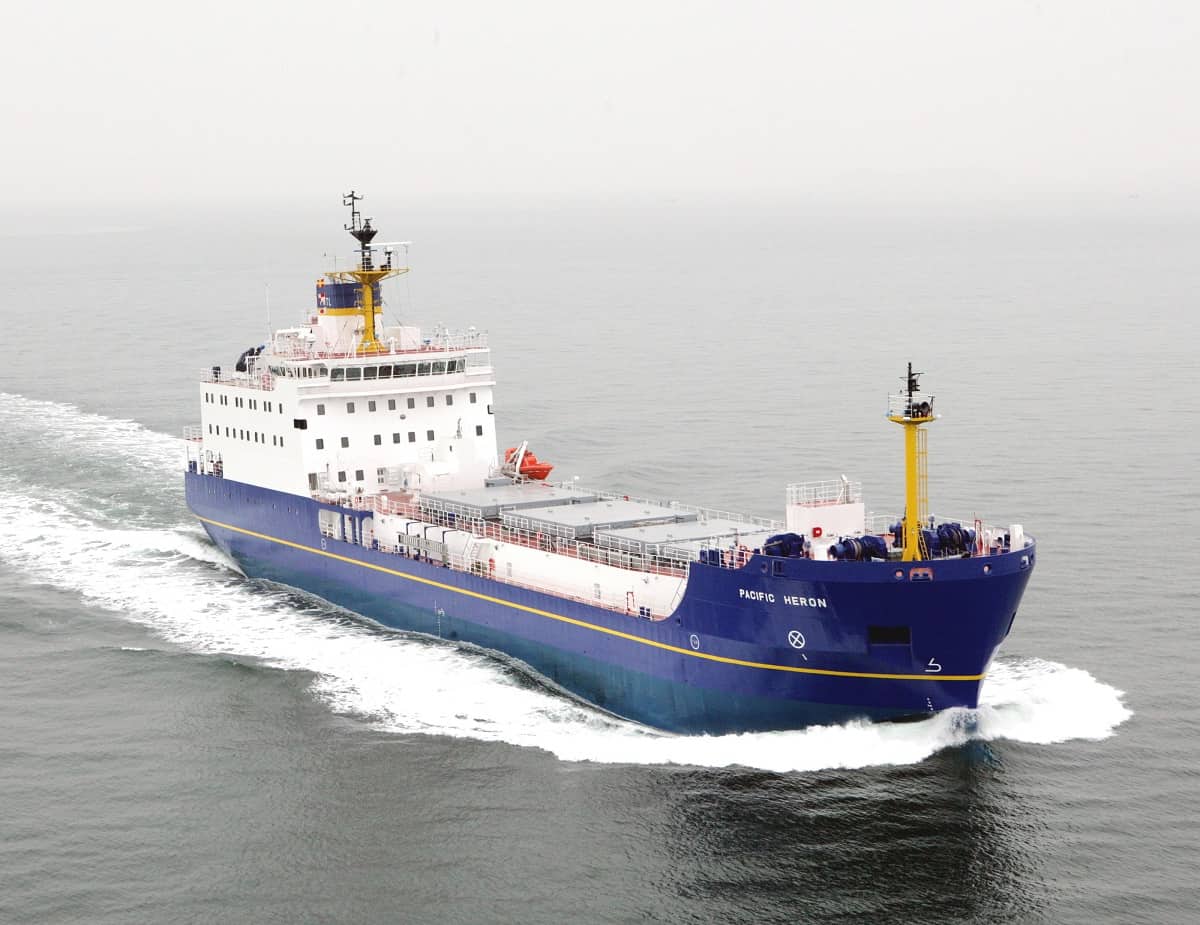Australia has never had much of a nuclear industry, largely because the country has always opted to use Australia’s extensive reserves of coal and natural gas. Nuclear power is actually banned under federal law. It is also banned in Victoria and South Australia under state law.
Australia has for decades been quite antinuclear. It prohibits the conduct of nuclear weapons tests. Its Nuclear Non-Proliferation (Safeguards) Act 1987 legislates on a wide range of nuclear-related possession, transport and other issues.
There have, however, been two Australian nuclear reactors — the OPAL reactor at Lucas Heights, which is in operation, and the High Flux Australian Reactor, which ran from 1958 to 2007, also at Lucas Heights. The Lucas Heights reactor is used for research and the manufacture of radioactive materials used in medicine.
From mine to reactor
Uranium is the fuel used in nuclear reactors. Australia’s uranium oxide reserves are the world’s largest, accounting for about one-third of total supplies, according to the World Nuclear Association. In the 2018-19 financial year, which runs from July to the following June, Australia produced and exported about 7,571 tonnes of uranium ore valued at about A$734 million.
While each individual tonne of uranium ore is quite valuable, in aggregate, it is next to nothing when compared to the value of Australian iron ore and coal exports, which were about A$63 billion and A$67 billion in 2018, respectively.
The United States is the biggest market for uranium exports from Australia and the U.S. accounts for more than half of the demand for Australian ore, according to the Australian Safeguards and Non-proliferation Office.

According to the Minerals Council of Australia, uranium is shipped from mines in containers that are either trucked or railed to the seaports at Adelaide, South Australia, or Darwin, Northern Territory.
There’s a good reason for that: There are only three operating uranium mines in the country. Ranger is in the Northern Territory, while Olympic Dam and Four Mile are in South Australia.
The Australian government has produced a “Guide to the Safe Transport of Uranium Oxide Concentrate,” which explains how uranium ore is shipped.
Firstly, the uranium is packed into 200-liter steel drums. Each drum is locked with a steel ring and clamped shut. The drums are then stowed in 20-foot shipping containers and secured by Kevlar straps and webbing. The drums and container effectively create a double wrap to minimize the potential for spillage. There is a maximum weight of about 21,200 kilograms (46,738 pounds) for shipments to the U.S.
The containers are sealed and bolted with consecutively numbered bolts at the mine site and checked throughout their transport.
There are a few radiation safety issues, which can be managed, as uranium ore mostly emits alpha radiation and that can be blocked by little more than a sheet or two of paper. The main radiation risk from alpha radiation would be if there was a spill of powdered ore and someone was to breathe in the dust.
However, uranium ore is also a weak, low energy, gamma radiation emitter. Gamma radiation is highly penetrating — it needs a good-sized chunk of lead to stop it. Uranium ore emits increasing amounts of gamma radiation for up to about two or three months after it has been mined and packed because Uranium 238 decays into Thorium 234 (which emits both beta and gamma radiation; beta radiation can be stopped by a thin aluminum plate).
As the gamma radiation emission rates from uranium ore are known, dose rates can be calculated and managed. In Australia, a human being would have to stand for about 1,000 hours about 1 meter (3.2 feet) away from a uranium ore holding shipping container to reach the legally mandated maximum occupational radiation exposure level.
According to the Minerals Council of Australia, there are about 50 shipments of 500 shipping containers of Australian uranium ore each year.

Photo: Shutterstock.
From fuel to waste
Globally, there are about 20 million consignments of radioactive materials transported by truck, rail and ships, according to the World Nuclear Association. But only a tiny proportion of that material is dangerous.
“Of the approximately 3,000,000 packages containing radioactive material that are shipped each year in the USA, only about 250,000 contain waste from U.S. nuclear power plants, and just 25 to 100 contain used fuel. The U.S. Department of Transportation estimates that the average distance per shipment of radioactive material is about 55 kilometres,” the World Nuclear Association says.
Not all nuclear waste is the same of course. According to ANSTO, an Australian-government funded nuclear research organization, there is low-level, intermediate-level and high-level waste.
Low-level waste
Low-level waste is typically such things as paper, plastic, gloves and so on that are contaminated with a small amount of radiation. They’re put in drums and are often stored onsite at the facility that produced them.
At ANSTO, this is at the Lucas Heights facility. About 40 cubic meters of low-level wastes are created in Australia each year. There is a site in Western Australia for low-level waste storage.
Elsewhere in the world, it may be buried in a landfill if it is very low-level waste or it can be stored in a low-level waste repository. One low-level waste storage facility was built and opened in northwest England in 2010.
Intermediate-level waste
Intermediate-level waste is often created by nuclear medicine and/or reactor operations. It may include resins, sludge or cladding. Such waste typically requires shielding. In theory, this waste should be stored in a geological depository for very long-term storage or disposal. According to the World Nuclear Association, Australia creates about 5 cubic meters of intermediate nuclear waste each year and, according to ANSTO, it currently stores about 447 cubic meters of intermediate-level waste.
Low- and intermediate-level waste are managed at about 100 places, such as at hospitals, mines and industrial sites around Australia. Ultimately, in Australia, a permanent (as in geological timescales) storage facility needs to be built for the storage of intermediate-level waste, particularly for Australian material that was shipped to France for reprocessing and repatriation back to Australia. It is currently being stored in an interim facility at Lucas Heights.
Intermediate waste is typically transported in a special container made from thick forged steel that has “impact limiters” at the front and back (giving it a dumbbell appearance). The transport container is shielded, is 6.5 meters long, 3 meters in diameter and weighs 95 tonnes when empty and 112 tonnes when loaded. It can be loaded on reinforced trailers or, as in the U.K., on reinforced rail cars.
The material that was returned to Australia from France was transported by ship aboard the BBC Shanghai, which was a geared heavy-lift/project cargo ship.
High-level waste
So-called high-level nuclear waste is basically spent nuclear fuel. After it is extracted from a nuclear reactor, it is highly radioactive and also very thermally hot.
Spent fuel rods generally have to be stored for between 10 and 20 years in a deep pool of water both to keep the spent fuel cool and also to act as a barrier to radioactive emissions (water is a very effective barrier against radiation). During that time, the radioactivity emitted from, and heat generated by, spent nuclear fuel drops dramatically.
Spent fuel rods can then be stored in a dry cask. Some elements in spent fuel, such as Neptunium-237, may have a radioactive half life of 2.14 million years. A half life is the amount of time it will take for the intensity of the radioactivity to decrease by half. After six half lives, the material will have 1.55% of the original radioactive intensity.
So it would theoretically take Neptunium-237 about 12.84 million years to reduce intensity to 1.55% of the original radioactivity. Neptunium-237 is of particular concern because it is so long lasting and, over that kind of timescale, is thought that it might be difficult to contain. Other types of Neptunium have short half lives. There are also other types of radioactive material in spent nuclear fuel.

Geological disposal
The World Nuclear Association reckons that spent nuclear fuel is radiotoxic for between 1,000 and 10,000 years and how hazardous the material is after that point will depend on the concentration of the material. The general consensus is that very highly radioactive materials will need to be stored indefinitely (i.e., on a geological timescale basis) deep in stable rock formations under the earth.
There are only three such facilities in the world. One is the 660-meter-deep Waste Isolation Pilot Plant in New Mexico. There are also two in Germany, both of which are former salt mines. There are others that are being built, including one in Finland. In the U.S. there are plans to build the Yucca Mountain Nuclear Waste Repository in Nevada, but there has been little in the way of progress.
Spent nuclear fuel is stored temporarily at 76 reactor or storage sites in 34 states in the U.S. But sooner or later that spent fuel will have to be moved from those temporary sites to deep geological disposal sites.
Meanwhile, spent nuclear fuel is already being moved around the U.S. in big casks today. Type B casks of 125 tonnes are used for the transport of the most dangerous kinds of nuclear waste. At the center, they have a gridded basket for holding the fuel rods. That’s surrounded by stainless steel, then lead (to block radiation), then thermal protection material and then more stainless steel. The whole flask has a series of cooling fins around it. There are large shock absorbers at each end of the cask.
Transport risks
An interesting question is the level of risk during transport. The World Nuclear Association points out that there are about 25 to 100 consignments of used fuel each year in the U.S. and that “there has never been an accident in which a Type B transport cask containing radioactive materials has been breached or has leaked.”
So on a pure, historical numbers basis, it looks good. On a scenario-planning basis, some concerns have been raised. In 2001, a 60-car freight rail derailment took place in the Howard Street Tunnel under Baltimore. A chemical fire burned for several days. Although there were no nuclear materials on that train, it was apparently the type of train that would carry nuclear materials. And that route was one that would be used to transport nuclear waste from a nuclear reactor.
The state of Nevada released a report in 2003 concluding that a steel-lead-steel cask would have failed after about six hours in the fire, and a solid steel cask would have failed after about 11 to 12.5 hours. There would have been contamination over 32 square miles of the city and the contamination would have killed up to 28,000 people over 50 years, the report claimed. However, in 2006, the U.S. Nuclear Regulatory Commission issued its own report claiming that there would not have been any release of spent nuclear fuel because it was very unlikely that the cask would have failed.
Maritime transport
Spent nuclear fuel is also transported by oceangoing ships. Probably the most well-known company that works in this area is Pacific Nuclear Transport Ltd., which is owned by a consortium of nuclear services companies. It has three ships dedicated to transporting spent nuclear fuel, plutonium and radioactive waste and the company has completed about 200 shipments over the last 40 years.
“The ships have safely covered millions of miles and there has never been a single incident resulting in the release of radioactivity. More than 2,000 casks of nuclear material have been safely transported by PNTL,” the company says.
The three ships — Pacific Grebe, Pacific Egret and Pacific Heron — all have a length of 104 meters, a width of 17 meters and a deadweight of 4,916 tonnes. They have a maximum cargo capacity of 20 casks. The ships are managed by an international company, Serco. There’s a fourth nuclear waste-carrying cargo ship, separately managed by Serco, called the Oceanic Pintail. It has similar specifications to the other three ships, but it can carry up to 24 casks.
PNTL has contracts in place with international salvage company Ardent in the event of an accident and it also has contracts with the U.K.’s Civil Nuclear Constabulary, an armed police force charged with protecting civil nuclear sites in the U.K. Its mission is to deter any attacker whose intent is theft or sabotage of nuclear material, to defend nuclear material and deny access to it and recover control of nuclear facilities and gain custody of nuclear materials.











